SQL Exercises: Find the number of orders booked for each day
SQL Formatting Output: Exercise-2 with Solution
From the following table, write a SQL query to find the number of orders booked for each day. Return the result in a format like "For 2001-10-10 there are 15 orders".
Sample table: orders
Sample Solution:
SELECT ' For',ord_date,',there are',
COUNT (ord_no),'orders.'
FROM orders
GROUP BY ord_date;Output of the Query:
?column? ord_date ?column? count ?column? For 2012-04-25 ,there are 1 orders. For 2012-06-27 ,there are 1 orders. For 2012-07-27 ,there are 1 orders. For 2012-08-17 ,there are 2 orders. For 2012-09-10 ,there are 3 orders. For 2012-10-05 ,there are 2 orders. For 2012-10-10 ,there are 2 orders.
Relational Algebra Expression:

Relational Algebra Tree:
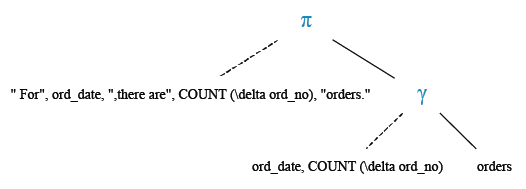
Explanation :

Pictorial presentation :
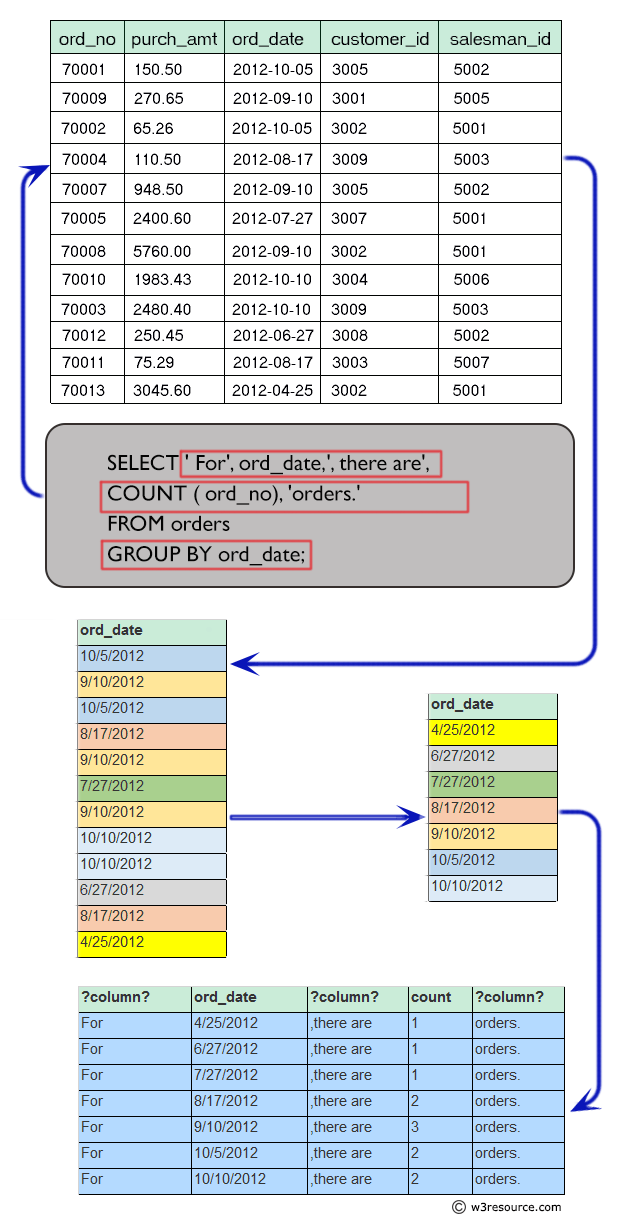
Practice Online
Query Visualization:
Duration:
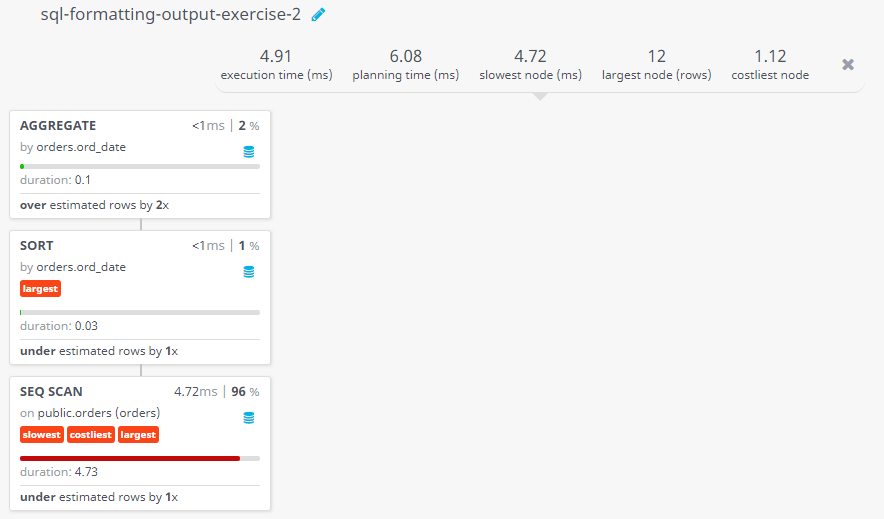
Rows:
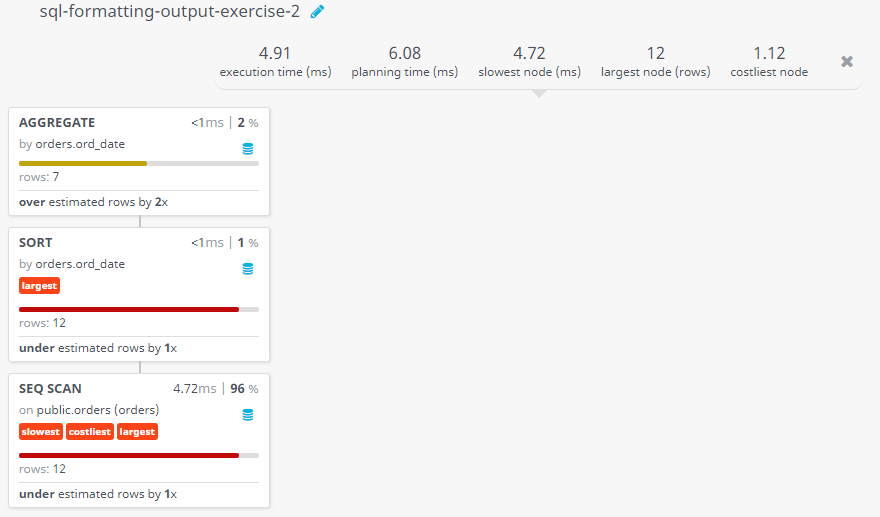
Cost:
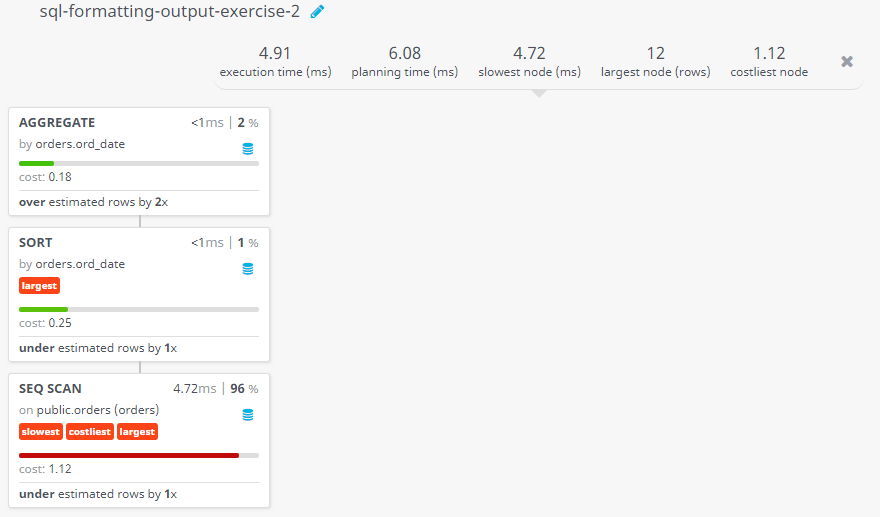
Have another way to solve this solution? Contribute your code (and comments) through Disqus.
Previous: From the following table, write a SQL query to select all the salespeople. Return salesman_id, name, city, commission with the percent sign (%).
Next: From the following table, write a SQL query to find all the orders. Sort the result-set in ascending order by ord_no. Return all fields.
Test your Programming skills with w3resource's quiz.
What is the difficulty level of this exercise?
SQL: Tips of the Day
SQL Server SELECT into existing table.
INSERT INTO dbo.TABLETWO SELECT col1, col2 FROM dbo.TABLEONE WHERE col3 LIKE @search_key
This assumes there's only two columns in dbo.TABLETWO - you need to specify the columns otherwise:
INSERT INTO dbo.TABLETWO (col1, col2) SELECT col1, col2 FROM dbo.TABLEONE WHERE col3 LIKE @search_key
Database: SQL Server
Ref: https://bit.ly/3y6tpA3
- New Content published on w3resource:
- HTML-CSS Practical: Exercises, Practice, Solution
- Java Regular Expression: Exercises, Practice, Solution
- Scala Programming Exercises, Practice, Solution
- Python Itertools exercises
- Python Numpy exercises
- Python GeoPy Package exercises
- Python Pandas exercises
- Python nltk exercises
- Python BeautifulSoup exercises
- Form Template
- Composer - PHP Package Manager
- PHPUnit - PHP Testing
- Laravel - PHP Framework
- Angular - JavaScript Framework
- Vue - JavaScript Framework
- Jest - JavaScript Testing Framework
